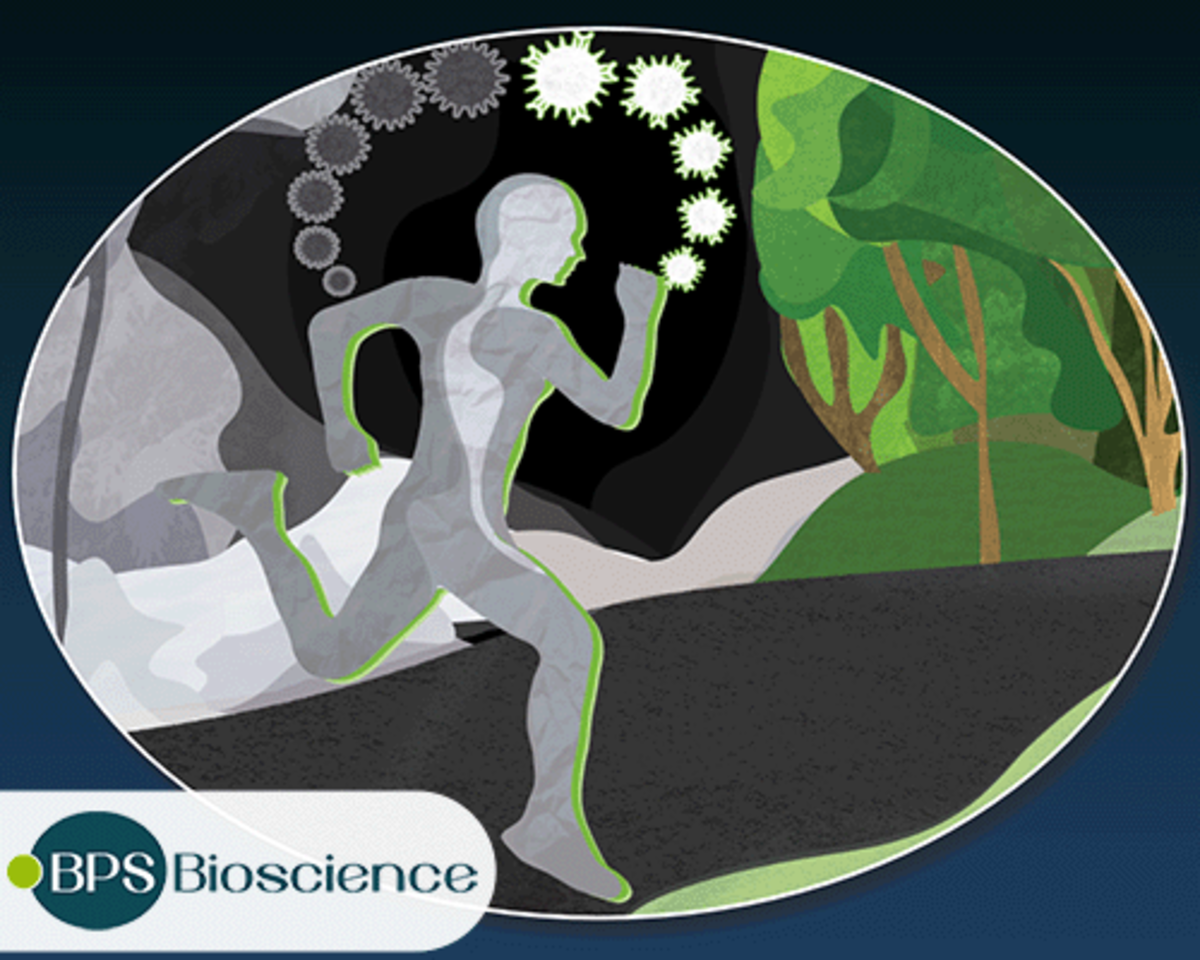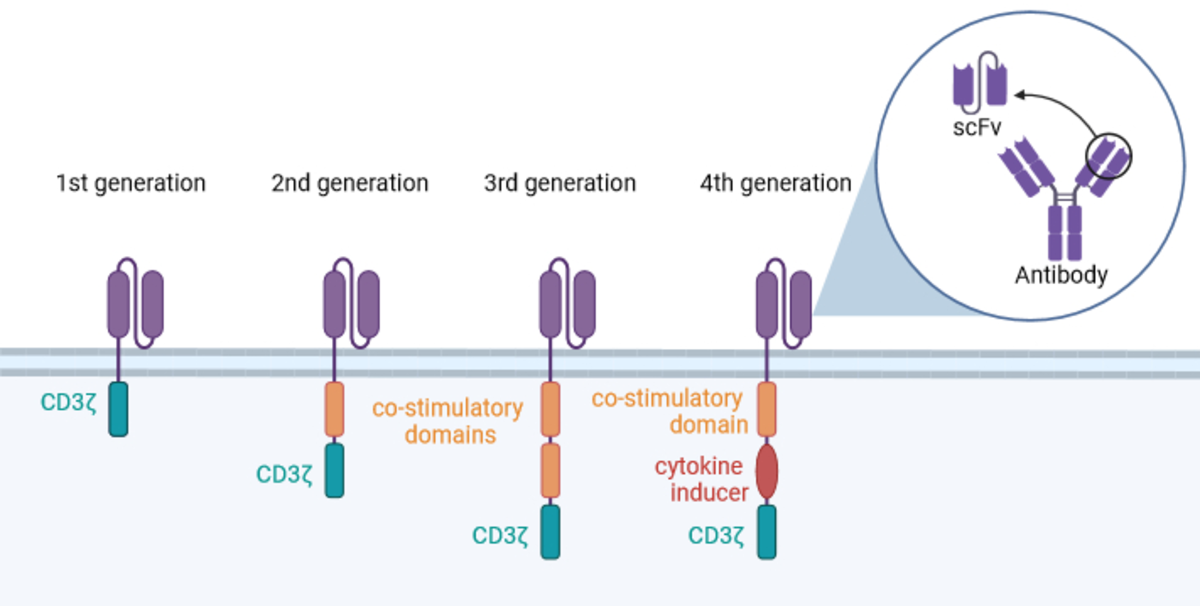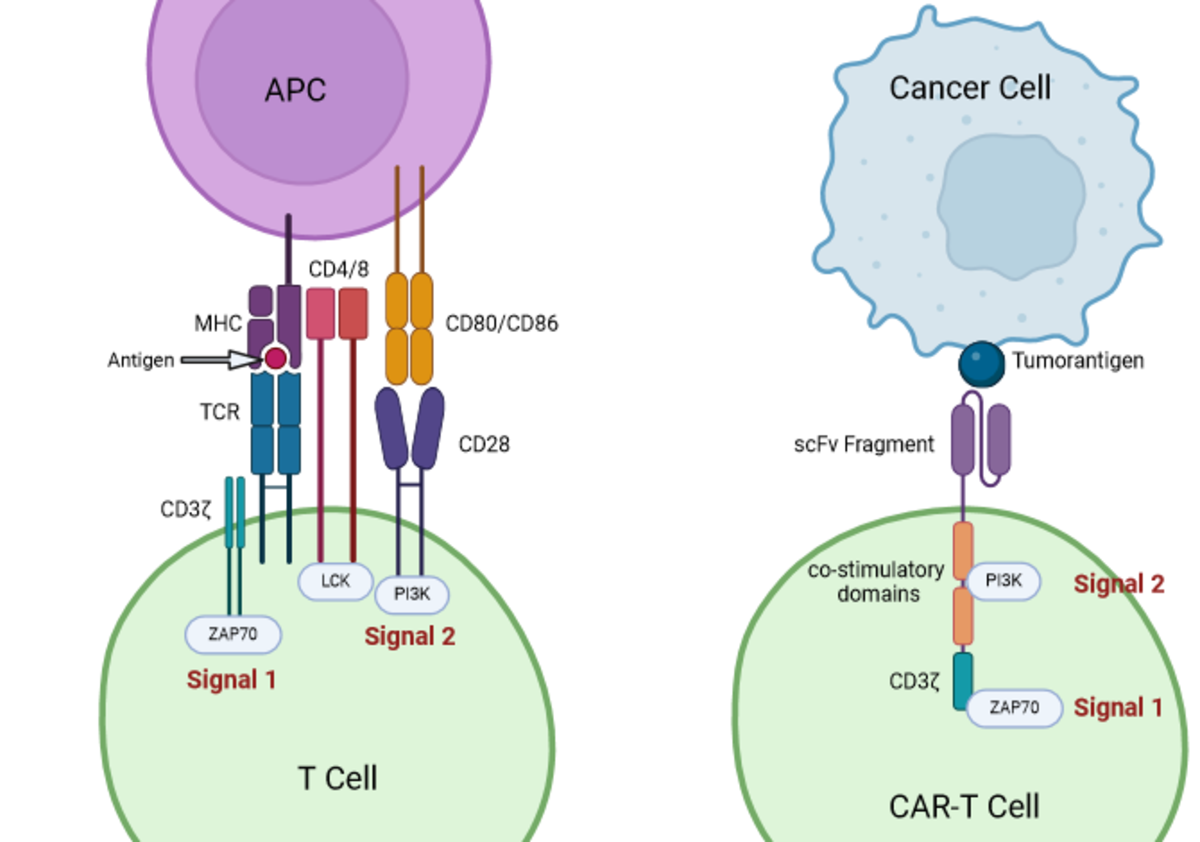Isn't it fascinating to imagine cells from your own body as customized therapies against diseases? What sounded like a funny idea a few years ago is now reality thanks to the development of so-called CAR-T cells. This innovative technology not only opens up new perspectives in the treatment of tumors, such as B-cell malignancies, but also offers promising approaches for combating infectious diseases and chronic inflammatory diseases such as HIV/AIDS or lupus [1].
Due to the enormous potential, research with and on CAR-T cells is gaining momentum. In this article, we dive into the basics and latest developments to give you a comprehensive insight into CAR-T research. Find out how CAR-T cells are opening up new horizons in medicine with their important role in immunotherapy. With BPS Bioscience as our trusted supplier, we are here to support you with the latest tools to drive the future of CAR-T research.

T Cells are the Guardians of the Immune System
On almost every cell in the body, endogenous peptides (antigens) are presented by intracellular proteins to patrolling T cells via the major histocompatibility complex (MHC). This so-called antigen presentation provides the T cells with information about which proteins are being synthesized in the respective cells at that time. If a cell is infected by a virus or undergoes a malignant genetic transformation, this highly regulated mechanism ensures that the foreign or mutated peptides are presented to the cells of the immune system. Each T cell has a specific T cell receptor (TCR) that constantly scans the organism for foreign signals and/or degenerated cells. As soon as a potential threat is recognized, the T cells trigger an immune response and other cells of the immune system, such as cytotoxic T cells, are recruited. T cells are precise and efficient detectors of foreign antigens, be they pathogenic invaders or malignant cells [2].
How are CAR-T cells constructed?
These special properties of T cells were the basis for the development of genetically modified CAR-T cells, which differ from conventional T cells in their structure due to so-called chimeric antigen receptors (CAR). These synthetically produced fusion proteins are localized on the cell membrane of the CAR-T cells (Fig. 1). The extracellular domain of a CAR consists of the scFv fragment, which represents the variable region of an antibody. A flexible linker covalently connects the heavy and light chains (Fig. 1). This extracellular antibody fragment binds to foreign antigens and thus indirectly serves to detect infections or degenerated cells.
The intracellular domain, which includes the CD3ζ complex and co-stimulatory elements, plays a crucial role in signaling and activation of the CAR-T cell after recognition of the target antigen by the extracellular domain. In the course of scientific progress, CARs have been modified several times, resulting in four generations that differ in their intracellular domain (Fig. 1).

The first generation contained only CD3ζ, but this was ineffective for tumor therapy [3]. Therefore, a co-stimulatory molecule was added to the second generation CARs. Third generation CARs consist of two co-stimulatory domains linked to CD3ζ. The "next generation CARs" contain a domain for the production of cytokines instead of the second co-stimulatory domain. The cytokines help to modulate the correct immune response and regulate inflammatory processes [4]. These changes improve the ability to produce more and longer-lived CAR-T cells [5].
Signal Transduction: T Cell vs. CAR-T Cell
In principle, every nucleated body cell has the ability to present antigens via the MHC. At the moment of antigen presentation, this cell is then referred to as an antigen-presenting cell (APC) (Fig. 2). After the binding of the MHC/antigen complex with the TCR, the T cell is activated by two signals. Signal 1 occurs when CD4 or CD8 binds to a MHC, activating the CD3ζ complex. Signal 2 occurs through the co-stimulatory interaction of two receptors, which triggers an enzymatic signaling cascade (Fig. 2).

CARs are characterized by their independence from antigen presentation via the MHC. Instead, the extracellular CAR recognition domain binds directly to the antigen (e.g. from a cancer cell), which leads to an activation of the CAR-T cell. The CD3ζ complex confirms antigen recognition, generating signal 1, and the co-stimulatory domains are responsible for triggering signal 2 (Fig. 2). The ineffectiveness of first generation CARs can be attributed to the lack of signal 2 to fully activate the T cell [3].
Tumor cells often evade the immune system by avoiding antigen presentation via the MHC, which is why this independence from MHC presentation represents a significant advantage of CAR-T cells in the fight against cancer [6].
Innovative Perspectives in CAR-T Cell Therapy with the CRISPR/Cas9 System
But how are CARs used for therapeutic purposes to treat cancer or other diseases? This is done via the CAR-T cell therapy, which begins with the removal of T cells from the patient. These are genetically modified to express CARs on their surface and then cultivated to be returned to the patient's body. There, the CAR-T cells are designed to bind the foreign antigens with their specific antibody fragment, thereby generating a cytotoxic immune response and combating the patient's disease [7].
Advances in CAR-T cell therapy have had a revolutionary impact on tumor treatment. Despite the success, challenges remain, such as the limited persistence and efficacy of CAR-T cells. To overcome these difficulties and expand the therapeutic potential, the integration of the CRISPR/Cas9 system has already proven to be a precise and powerful tool [8].
CRISPR/Cas9 technology is based on a principle of bacterial immune defense and has established itself as a pioneering method in gene editing. If a bacterium is infected by a virus or phage, the bacterium integrates parts of the foreign genetic material into its own DNA. Multiple infections by different viruses/phages result in a collection of short sequences of foreign DNA (so-called "spacers"), which are separated from each other by short, repetitive sequences. Together they form the CRISPR locus (Clustered Regularly Interspaced Short Palindromic Repeats), which the bacteria use to defend themselves against infections. Upon reinfection, RNA molecules are synthesized from the CRISPR locus, which are referred to as sgRNA (single guide RNA) and fused with the Cas9 protein. Cas9 serves as an endonuclease and is guided by the sgRNA to the corresponding section on the foreign DNA. There, Cas9 catalyzes a double-strand break in the DNA, which leads to the destruction of the virus.
CRISPR/Cas9 is already being used in science to optimize CAR-T cells. The therapeutic efficacy of CAR-T cells depends on the effector functions of the patient's T cells. The effector function describes the ability of the T cells to induce a cytotoxic immune response against the infected or mutated cells. However, the immunosuppressive microenvironment of the tumor leads to T cell exhaustion, which in turn causes poor expansion and persistence of CAR-T cells. Editing inhibitory checkpoint receptors and certain transcription factors using CRISPR helps to curb T cell exhaustion [9]. In addition, the CRISPR/Cas9 system enables targeted adaptations to improve the binding affinity of CAR-T cells towards target antigens. These approaches can increase the efficacy of immunotherapy and counteract the problems associated with the use of CAR-T cells.
However, there are also challenges associated with the CRISPR/Cas9 system. Off-target mutations, where the genetic modifications could have unintended effects on other genes, pose a major risk. Strategies such as the optimized design of sgRNAs and the selection of different Cas nucleases are crucial to minimize these side effects [8].
The diverse Support of BPS Bioscience
BPS Bioscience offers a wide range of high-quality products for your CAR-T cell therapy research. Lentiviruses are used for the transfer of CAR genes into the harvested T cells. For this purpose, lentiviruses with different antigen specificities are offered, which primarily enable the efficient development of CAR-T cells for the treatment of hematological malignancies, such as B-cell tumors. In addition, the TCR CRISPR/Cas9 lentiviruses offer the possibility of targeted genetic modification of TCR genes. Various knockout and/or reporter cell lines can be used to investigate the functions of immune cells, such as cytotoxic T cells, or key molecules, like NFAT (production of cytokines). The Untransduced T Cells can be used as a negative control in experiments with CAR-T cells to study specific effects.
BPS Bioscience products pave the way for your work on and with CAR-T cells. Discover some of BPS Bioscience's highlight products for the CRISPR/Cas9 system and CAR-T cells:
| Cat-No. | Item | Size | Price (CHF) |
|---|---|---|---|
| 78556 | TCR Knockout NFAT-Luciferase Reporter Jurkat Cell Line | 2 vials | price on request |
| 78539 | TCR Knockout Jurkat Cell Line | 2 vials | price on request |
| 78342 | B2M Knockout Jurkat Cell Line | 2 vials | price on request |
| 78363 | B2M Knockout NFAT Luciferase Reporter Jurkat Cell Line | 2 vials | price on request |
| 78391 | B2M/CIITA Double Knockout THP-1 Cell Line | 2 vials | price on request |
| 78552 | TCR/B2M Knockout Jurkat Cell Line | 2 vials | price on request |
| 78390 | CIITA Knockout THP-1 Cell Line | 2 vials | price on request |
| 78389 | B2M Knockout THP-1 Cell Line | 2 vials | price on request |
| 78062 | TCR CRISPR/Cas9 Lentivirus (Non-Integrating) | 2 x 500 ul | 1'230.00 |
| 78600 | Anti CD19 CAR Lentivirus (CD19 ScFv-CD8-4-1BB-CD3z) | 50 ul | 1'607.00 |
| 78757 | CD8+ TCR Knockout NFAT-Luciferase Reporter Jurkat Cell Line | 2 vials | price on request |
| 78775 | Anti CD19 CAR Lentivirus (CD19 ScFv-CD8-4-1BB-CD3z, eGFP) | 50 ul | 1'672.00 |
| 78655 | Anti BCMA CAR Lentivirus (Clone C11D5.3 ScFv-CD8-4-1BB-CD3z) | 50 ul | 1'389.00 |
| 78171-1 | Anti CD19 CAR-T Cells | 1 vial | 1'878.00 |
Innovative Power in Immunotherapy
CAR-T cell therapy is proving to be a breakthrough in cancer treatment and its application extends beyond tumors. Through technologies such as CAR-T cell therapy and the CRISPR/Cas9 system, the future of treating cancer and many other diseases that were considered "incurable" in the past looks very promising.
Our partner BPS Bioscience provides advanced tools for research on CAR-T cells and the CRISPR/Cas9 system. With further research, this could mean a revolution in disease treatment.
Sources
[1] bpsbioscience.com/car-t-cell-therapy-technical-note (07.02.2024)
[2] Labanieh, L., Majzner, R. G. und Mackall, C. L. (2018) „Programming CAR-T cells to kill cancer“, Nature biomedical engineering, 2(6), S. 377–391. doi: 10.1038/s41551-018-0235-9.
[3] Mitra, A. u. a. (2023) „From bench to bedside: the history and progress of CAR T cell therapy“, Frontiers in immunology, 14. doi: 10.3389/fimmu.2023.1188049.
[4] www.onmeda.de/gesundheit/anatomie/zytokine-id201341/ (07.02.2024)
[5] Tomasik, J., Jasiński, M. und Basak, G. W. (2022) „Next generations of CAR-T cells - new therapeutic opportunities in hematology?“, Frontiers in immunology, 13. doi: 10.3389/fimmu.2022.1034707.
[6] Srivastava, S. und Riddell, S. R. (2015) „Engineering CAR-T cells: Design concepts“, Trends in immunology, 36(8), S. 494–502. doi: 10.1016/j.it.2015.06.004.
[7] Katalog, BPS Bioscience: CAR-T Cell Tools for Engineering the Immune System
[8] Wei, W., Chen, Z.-N. und Wang, K. (2023) „CRISPR/Cas9: A powerful strategy to improve CAR-T cell persistence“, International journal of molecular sciences, 24(15), S. 12317. doi: 10.3390/ijms241512317.
[9] Manriquez-Roman, C., Siegler, E. L. und Kenderian, S. S. (2021) „CRISPR takes the front seat in CART-cell development“, BioDrugs: clinical immunotherapeutics, biopharmaceuticals and gene therapy, 35(2), S. 113–124. doi: 10.1007/s40259-021-00473-y.

BPS Bioscience
Experts in protein design, expression, purification, and characterization, cell line and lentivirus engineering, and biochemical and cellular assay development.
Shop ONE-Step and TWO-Step Luciferase Assays by BPS Bioscience
